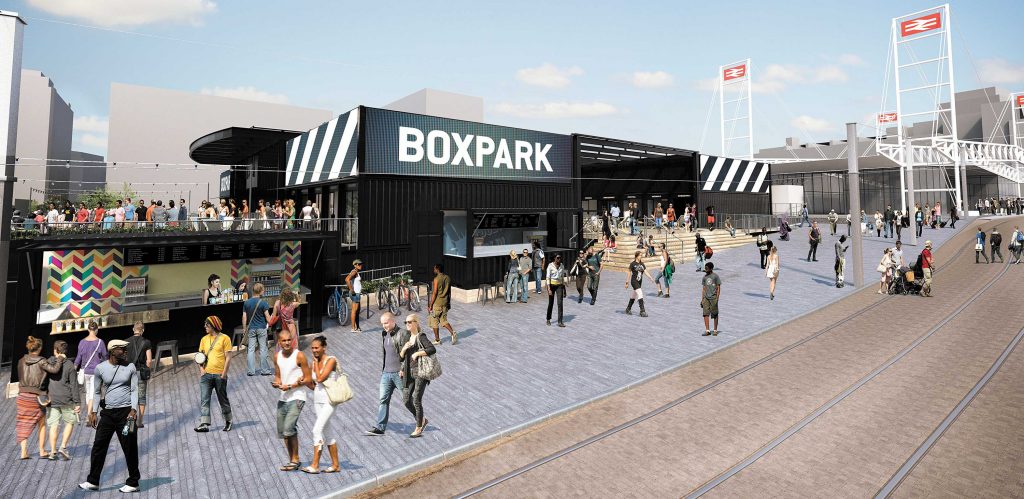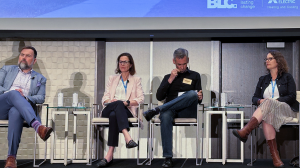Futurist Nikolas Badminton is an enthusiastic technology evangelist. If you aren’t, he wants to talk to you.
“Technology is a huge opportunity for humanity to design better cities and to live better,” said Badminton. “I am an optimist about technology and what it can do. The fearmongers of a dystopian future need to do more research and watch less science fiction. Or, come and see me talk.”
Whether you welcome or dread a technological brave new world, you’ll have a chance very soon to hear Badminton.
He is the keynote speaker at Vancouver Buildex 2018, which takes place February 14-15 at the Vancouver Convention Centre West.
Badminton has had plenty of keynote practice.
“I have done over 75 keynotes in the past 18 months all around the world – North America, Europe and Asia,” he said.
Badminton speaks on a wide range of technology-related subjects, including, but not limited to, smart cities; virtual, augmented and mixed reality; hospitality and travel; the sharing economy; autonomous transportation; and the future of artificial intelligence integrated with life and business.
Recently he spent several days with a CBC film crew in the San Francisco Bay area working on a documentary about human performance.
Among other activities, Badminton fasted for 36 hours and compared performance notes with a member of the Oakland Raiders NFL football team.
Badminton is an advocate for smart cities and the Internet of things.
“The ways city work behind the scenes will change through the use of integrated sensors – on systems, cameras and hardware devices – and the collection of data,” he said. “The sensors will be integrated and the city will become a configurable operating system.”
In the future, cities can reap big financial dividends by spending their money carefully.
“Smart lighting and water solutions alone can save a large city millions of dollars,” he said, citing the example of Barcelona, Spain.
“In 2009, the city identified 12 areas for intervention, including transportation, water, energy, waste and open government, and started 22 programs,” Badminton said.
The results were dramatic.
Smart lighting saved $37 million per year, and smart water saved $58 million.
Annual parking revenues increased by $50 million and 47,000 new jobs were created.
Badminton has studied the many non-traditional types of structures being built.
In London, for example, ContainerVille is a home for start-ups and small businesses. It consists of 45 containers arranged over three floors and up-cycled into modern work spaces in a smart area in the central part of the city.
Each container can accommodate up to six desks and is equipped to be a clean, modern work space with Wi-Fi, double glazing, heater, electricity and a kitchen unit.
The whole site is protected with CCTV and gates which are locked at night.
Nearby is an abundance of food, coffee shops, pubs and all the other 21st century necessities of life.
In Denmark, houses are being built from biological waste.
Biological House in Copenhagen was created from biomaterials — things like grass, straw, tomato stems and seaweed — that would otherwise have been burned for energy.
The waste was then made into composites and pressed into boards for cladding.
According to tests by the Danish Technological Institute, the structure of which the boards are a part is as strong as a house of normal construction.
Using 3D printing, a San Francisco start-up built an entire house in a Russian town in just 24 hours.
The company used a mobile 3D printer to print out the house’s concrete walls, partitions and building envelope.
Workers then manually painted everything and install the roofing materials, wiring, hydro-acoustic and thermal insulation.
The result is a 400-square-foot house that’s approximately the same area as a standard hotel room.
Not including land, the house cost a little over US$10,000 to build, with the door and windows taking up the largest part of the budget.
Badminton says there are several reasons spurring the search for new building types.
“One is affordability,” he said. “As cities become more expensive, people who want to own property they will need to think smaller and more alternatively.”
Another reason is flexibility.
“Many people will forgo owning their own home and instead will work and travel the world as digital nomads,” Badminton said. “But they’ll still need places to live.”
Finally, there’s the sustainability argument.
“The age of traditional houses is over,” said Badminton. “People want to live in a way that is better for the environment, using less power and more green building materials.”
Buildex participants can hear W14 – Cities of the Future: Beauty, Brains and Brawn on the morning of Feb.14.











Recent Comments